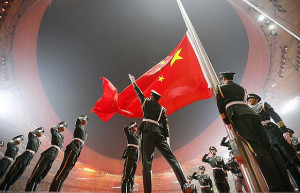
Beijing has called before, and continues to call this operation to capture the Paracel Islands, as the restoration of the historic borders of China, the liberation of territories that historically belonged to China. However, Beijing’s historical claims are questionable at the very least, on the contrary, there are many documents confirming that the islands were actually a part of Vietnam in the 19th century. It is known that the emperor Zyalong, the founder of the Nguyen Dynasty, and his successors showed an active interest both in the Paracel and in the Spratly Islands. For example, in 1815-1816 a special expedition was sent there by order of the emperor Zyalong to survey the Paracel archipelago and the sea routes to it. In 1834-1836, the Vietnamese emperor Minh Mang instructed his officials to survey each island of the Paracel Archipelago, to prepare an overview of the surrounding waters, to make maps, to build temples and to put signs on the islands to show that they belonged to Vietnam. In 1847, the Emperor Thieu Chi approved the report of the Ministry of Public Works, which stated, inter alia: “… since the area of Hoangsha is located in our territorial waters, we must, according to the general rules, send warships there to find sea routes”. During the period of French colonial rule in Vietnam, these islands were a part of the Indochinese Union that united Vietnam, Laos and Cambodia at that time.
Therefore, it is very difficult to talk about China’s historical rights in the Paracel Archipelago. Something else is more important – Beijing understood it in the 1970s, and understands it now – that these islands have a great strategic importance for the military control over the South China Sea, as well as in terms of the exploitation of the fish stocks, and for exploration of offshore areas to discover oil and gas. In addition, the seizure of the Paracel changed the geopolitical situation in the entire region of South-East Asia. China opened a direct route further south, towards the Spratly Islands. These islands became the new target of Chinese foreign policy and military efforts after the Paracel Islands. Back in July 1977, the Foreign Minister Huang Hua said during talks with representatives of the Philippines that “Chinese territory stretched south up to the James Shoal near Sarawak (Malaysia)… You may conduct mineral exploration as you wish. However, when the time comes, we will take these islands back. Then there will be no need to negotiate, because these islands have been a part of China for a long time…”.
These words of Chinese Foreign Minister were prophetic in a way. In the second half of the 1980s, Chinese warships appeared far in the south, at the Spratly Islands, and Chinese marines seized several important support points in this part of the world. In 1995, they went further, and put Mischief Reef, located near the Philippine island of Palawan, under their control. This operation, like many subsequent attempts by China to expand its presence on the Spratly Islands, once again brought China and the Philippines to the brink of a real war.
Today, forty years after the described events, we can confidently say that a little-known lightning war on distant islands, which was neither internationally condemned nor even seriously discussed at the time, was actually a prelude to a new historical era, when the conflict in South China Sea turned from a bilateral into a multilateral one. This brought in the Philippines, and later turned into a global conflict when the United States began to intervene more and more actively. All this avalanching political process, which began after the seizure of the Paracel Islands by China, is another confirmation of the well-known observation that – sometimes even a small stone can cause a full-scale avalanche.
Dmitry Mosyakov, Professor, Doctor of Historical Sciences, Director of the Center for Southeast Asia, Australia and Oceania and the Institute of Oriental Studies of the Russian Academy of Sciences, exclusively for the online magazine “New Eastern Outlook”.
